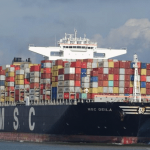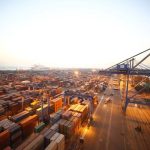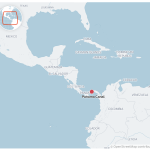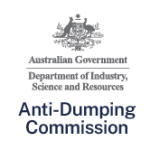Insight – September 2023
Blanked sailings are now the norm

Blanked Asia-Europe sailings have become expected in liner operators’ routines, according to Alphaliner’s latest report today (16 August).
Record newbuilding deliveries have made operators reduce sailings to manage capacity and THE Alliance has the largest percentage of skipped schedules.
THE Alliance has blanked just over 10 of its sailings, translating to nearly 20% of sailings that have been skipped. In comparison, the OCEAN Alliance has skipped 10 of its 90-odd voyages, amounting to a suspension rate of 10%.
Skipping sailings was initially a way to reduce capacity in times of low cargo demand. During the Covid-19 pandemic, missed sailings were the consequence of port congestion with ships arriving too late for a new round voyage. Now with the influx of new tonnage and a sufficient amount of available ships, blanked sailings have become common practice for a different reason. Even with ONE receiving new ships, THE Alliance had the largest percentage of skipped sailings in June and July.
The 2M agreement of MSC and Maersk blanked only three China-Europe trips, or 4% of sailings, in the same period. That said, MSC has struggled to fill slots on its standalone weekly Swan service that connects Asia to North Europe and Russia.
Last week, MSC implemented an eleventh-hour void sailing affecting the 14,000 TEU MSC Deila.
Alphaliner said, “Limiting capacity should remove some pressure on spot freight rates.”
When the Shanghai Containerized Freight Index (SCFI) closed on 11 August, Asia-North Europe rates went dipped to US$926/TEU, while Asia-Mediterranean rates went down to US$1,507/TEU.
Although Transpacific rates edged up to US$2,017/FEU for Asia-US West Coast and US$3,071/FEU for Asia-US East Coast, Linerlytica said these could come under pressure, as cargo volumes remain lower year-on-year and the Panama canal draught restrictions have had limited impact since priority passage is granted to liner services.
Read the full press release here
**SOURCE, Container News, By Martina LI 16/08/2023
DP World to boost container-handling capacity by year-end as demand rises
DP World to boost container-handling capacity by year-end as demand rises

Global ports operator DP World plans to add about three million Twenty-Foot Equivalent Units (TEUs) of container-handling capacity by the end of the year to help meet growing demand in key trade markets.
The company, which currently manages approximately 9 per cent of the world’s handling capacity and is among the top five global ports operators, said the addition will take its total gross capacity to 93.6 million TEUs.
Its medium-term target is to reach 100 million TEUs per year, depending on demand, Tiemen Meester, chief operating officer of ports and terminals at DP World, said in a statement on Tuesday.
“We have to take a longer-term view of global economics, looking at how demand will change and how we can meet it in the most efficient way,” Mr Meester said.
The capacity additions to be completed this year in key markets include Caucedo (Dominican Republic) with an additional 1.2 million TEUs, Yarimca (Turkey) with an additional 579,000 TEUs, Sokhna (Egypt) with an additional 500,000 TEUs and Jeddah (Saudi Arabia) with an added 200,000 TEUs.
Other markets include Callao in Peru and Saigon in Vietnam with another 200,000 TEUs. Terminals in Luanda, Dakar, Berbera and Vancouver will each get an additional capacity of 100,000 TEUs.
The expansion plan comes as global container throughput is forecast to grow to 932 million TEUs by 2025, up from 858 million TEUs in 2021, according to maritime research and consulting services firm Drewry.
“The firm’s capacity expansion plans come at a vital time with inflation, increased cost of living and geopolitical uncertainties causing concern about global trade and fuelling demand for faster, more resilient supply chain solutions,” DP World said.
Read the full article here
**SOURCE, The National, By Deena Kamel 15/08/2023
China’s heavy-duty truck industry: The road ahead
Premiumization, electrification, autonomous driving, and a value pool shift to solutions and services will shape the future of heavy-duty trucks in China.
Over the past decade, China has experienced an infrastructure boom and mushrooming demand for road transportation, leading to rapid growth of the heavy-duty-truck (HDT) market. Sales of HDTs in China grew from 600,000 vehicles in 2015 to a peak of 1.6 million in 2020. Then, in 2022, the HDT market in China went into a slump; a regional economic slowdown, COVID-19 lockdowns, and the fact that many customers prepurchased HDTs in 2020 and 2021 resulted in a sales volume of only 700,000 vehicles in 2022.
This slump is unlikely to be permanent. Given the size and resilience of the country’s economy, we expect the Chinese HDT industry to rebound and retain a significant and stable commercial base. That said, the rapid development of the past decade will be difficult to replicate.
As of 2022, the top five participants in China’s HDT market held more than 80 percent of the market—and the industry is becoming more concentrated. As demand normalizes after the boom, the established leaders will likely maintain their positions at the top of the market, but competitors from other geographies and adjacent sectors—including, for example, OEMs that formerly specialized in electric passenger vehicles—are likely to continue to jostle for position. Another example is that some global OEMs are already investing in the market, localizing their manufacturing by forming or acquiring Chinese companies to reduce costs and meet specific needs of local customers.
Read the full article here
**SOURCE, McKinsey & Company, 09/08/2023
Panama Canal Update: Restrictions to Last 10 Months
 In a significant maritime development, the Panama Canal Authority has issued a warning that stringent water-conserving measures will remain enforced for the next 10 months, impacting global shipping operations. This restriction comes as a response to an unprecedented drought coupled with the influence of the El Niño weather phenomenon.
In a significant maritime development, the Panama Canal Authority has issued a warning that stringent water-conserving measures will remain enforced for the next 10 months, impacting global shipping operations. This restriction comes as a response to an unprecedented drought coupled with the influence of the El Niño weather phenomenon.
Key Developments:
- The Panama Canal Authority has appealed to global shipping organizations to collaborate on sharing transit plans, particularly at this vital maritime chokepoint.
- In response to adverse weather conditions, administrators at the Panama Canal have implemented several measures:
- Draft restrictions for ships transiting neopanamax locks have been reduced by 2 meters.
- Daily transits have been curtailed by 20%, allowing only 32 vessels per day, leading to a substantial backup of ships at both ends of the canal.
- The current tally of ships awaiting transit stands at 129, down from a peak of 165 earlier this month, but still notably higher than the average, marking a 43% increase.
- The deputy administrator of the Panama Canal, Ilya Espino, confirmed to Reuters that these restrictions are set to persist for the next 10 months, spanning throughout the first half of the upcoming year.
- Container services and cruise itineraries, which often involve long advance bookings, will feel the impact differently from bulk sectors, where the impact is more immediate and unplanned.
- For larger containerships facing draft restrictions, approximately 2,500 TEUs of space cannot be utilized, resulting in a maximum headhaul utilization of 84%. Options like re-routing via the Suez Canal are being considered.
- Smaller containerships, still able to pass fully laden, are exploring alternatives like backhaul returns to Asia via the Suez or the Cape, even though these routes entail longer distances and times.
- The Panama Canal Authority and industry players such as the World Shipping Council, INTERTANKO, INTERCARGO, and BIMCO could potentially collaborate to optimize resource utilization in the short and medium term.
- Despite these developments, the impact on container spot rates over the past two weeks has been relatively muted. However, experts suggest that prolonged restrictions may lead to increased freight rates and potential cargo diversions.
Industry Insights:
- Niels Rasmussen, Chief Shipping Analyst at BIMCO, emphasized that extended restrictions could result in further freight rate hikes and the possibility of cargo redirection to US West Coast ports via rail.
- Notably, the predicament in Central America is unlikely to have a significant impact on global supply chains, as the container trade is already grappling with excess ship capacity. Read more here & here
AUSTRALIAN TRUSTED TRADER
Australian Trusted Trader reduces red tape for Trusted Traders at the border, improves certainty in export markets, and expedites the flow of their cargo in and out of Australia, which means faster access to market.
Ad ministered by Home Affairs with the Australian Border Force, Trusted Trader is free and accredits Australian businesses with compliant trade practices and a secure supply chain. Once accredited, businesses have access to a growing range of benefits that simplify their customs processes.
ministered by Home Affairs with the Australian Border Force, Trusted Trader is free and accredits Australian businesses with compliant trade practices and a secure supply chain. Once accredited, businesses have access to a growing range of benefits that simplify their customs processes.
SILA Global is an Australian Trusted Trader (ATT) and we encourage our clients to explore the benefits of being an ATT. If you would like to discuss this further or be guided through the process, our in-house customs broker, Nic Demo, is happy to help!
Nicoll Demo
nicoll@sila.net.au
(07) 3908 1622
ANTI-DUMPING COMMISSION
 Find goods currently subject to measures in the
Find goods currently subject to measures in the
dumping commodity register (DCR)
Notable updates – Steel products:
Wind towers
615 – Review – China
Steel reinforcing bar
610 – Continuation – Greece, Indonesia, Spain, Taiwan, Thailand
Steel Pallet Racking
617 – Continuation – China, Malaysia
Aluminium zinc coated steel
630 – Accelerated Review – Korea
Steel pallet racking
617 – Continuation – China, Malaysia
Zinc coated (galvanised) steel
631 – Accelerated Review – Korea
